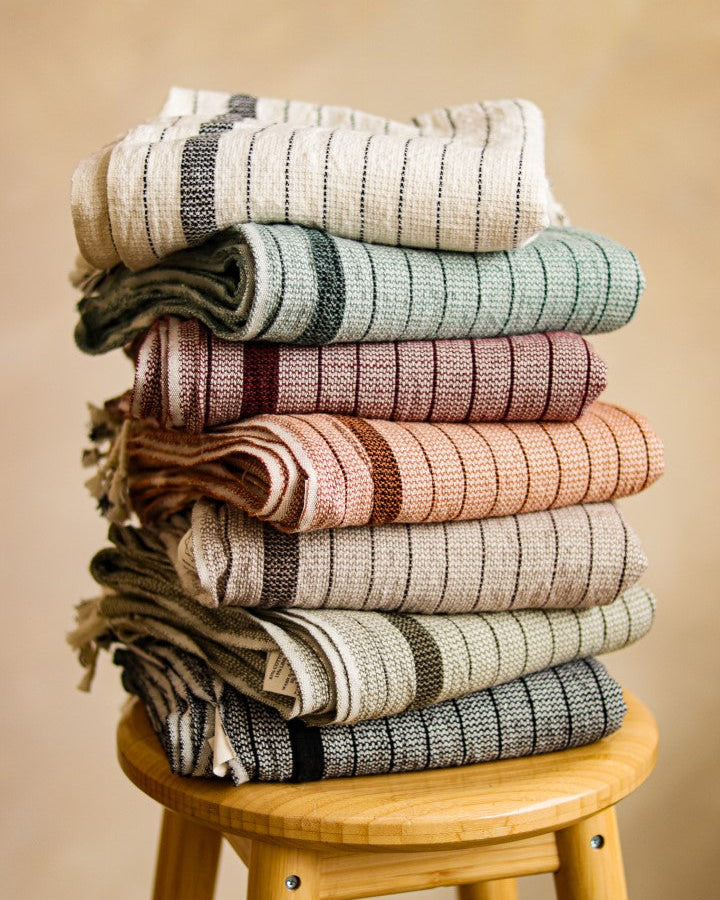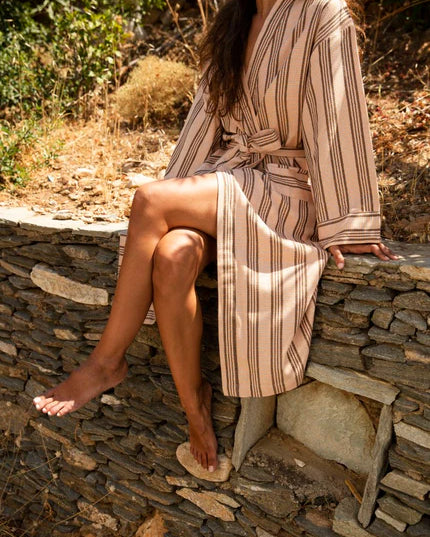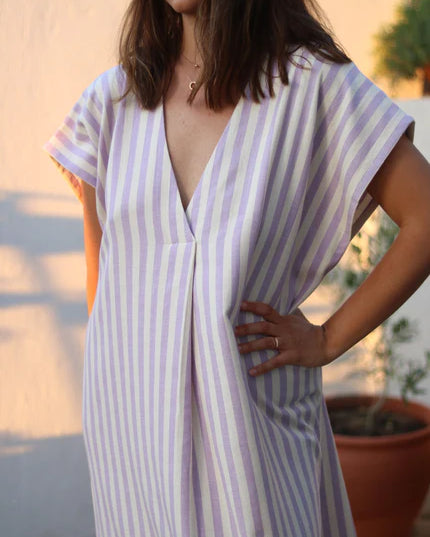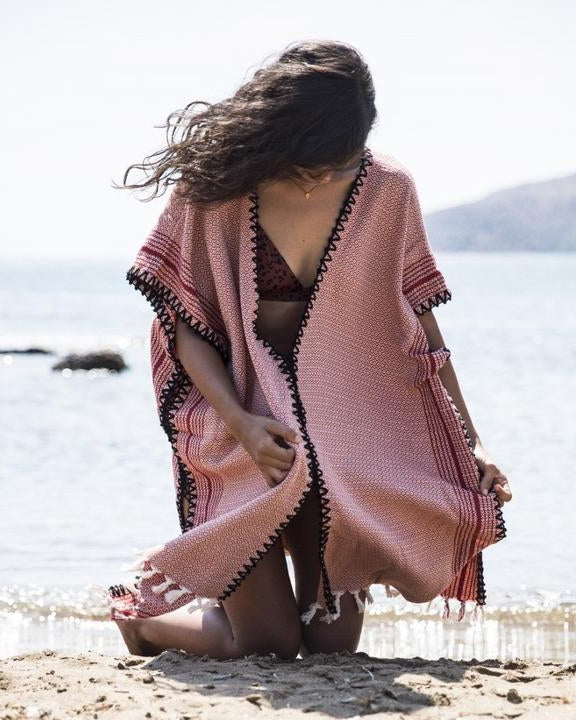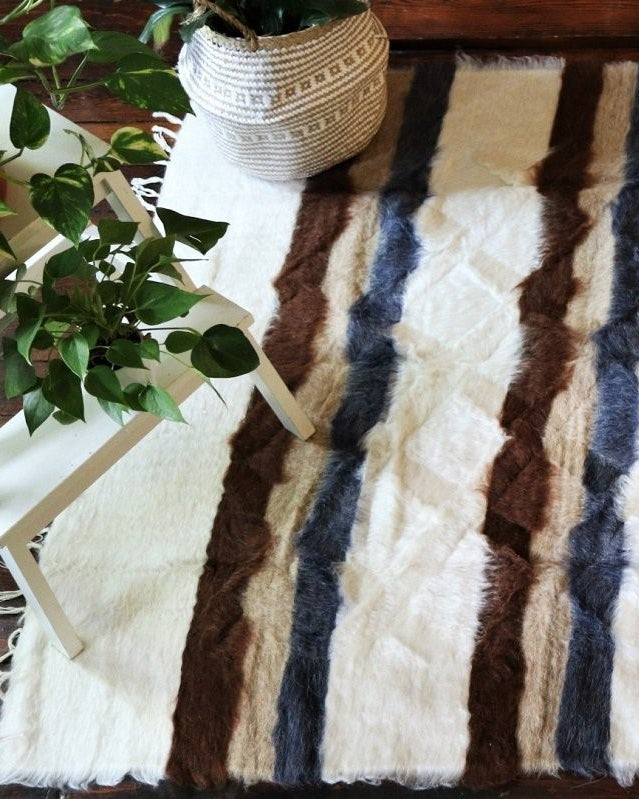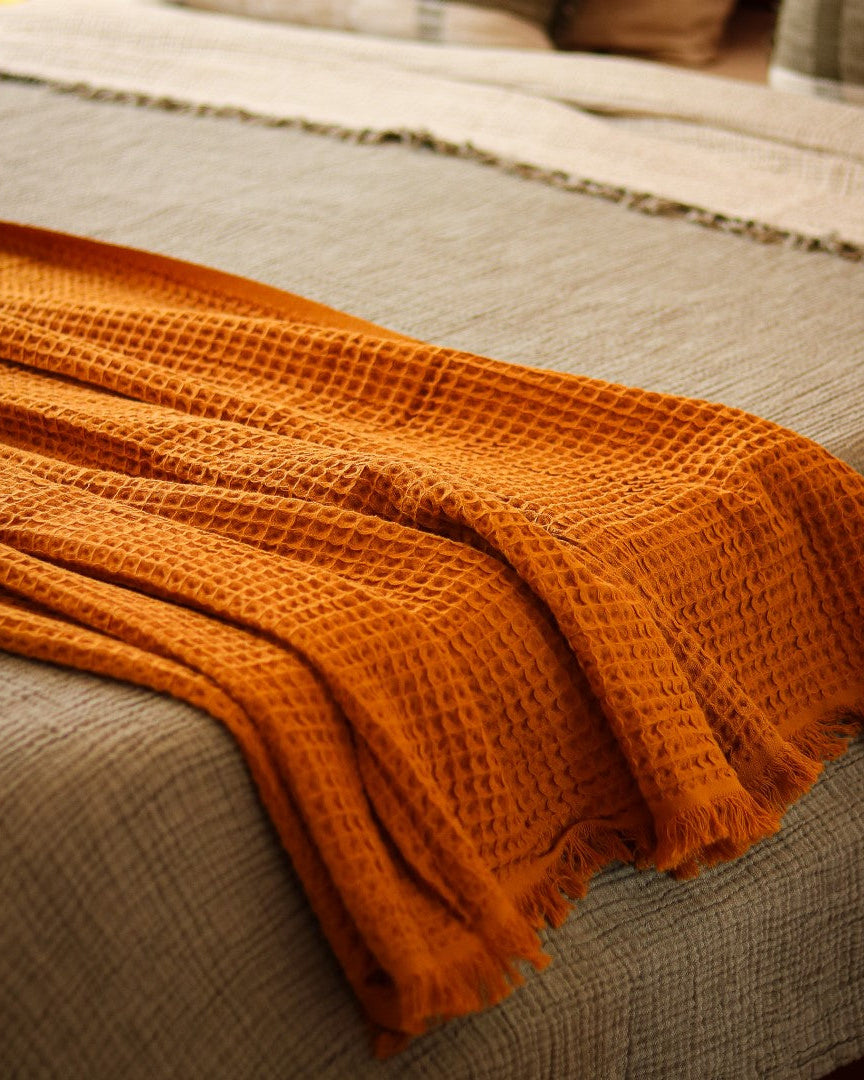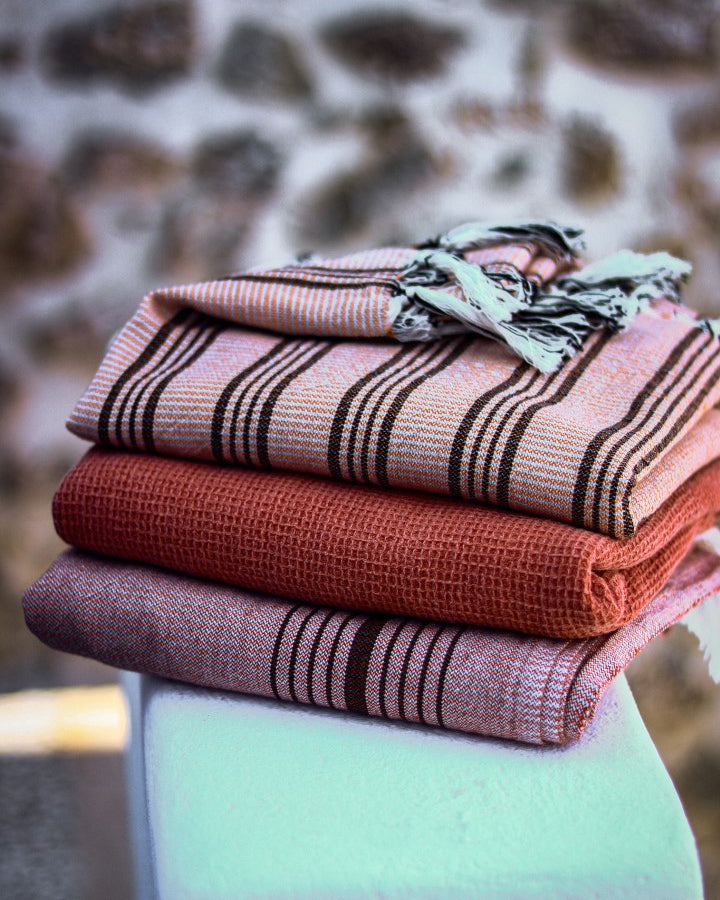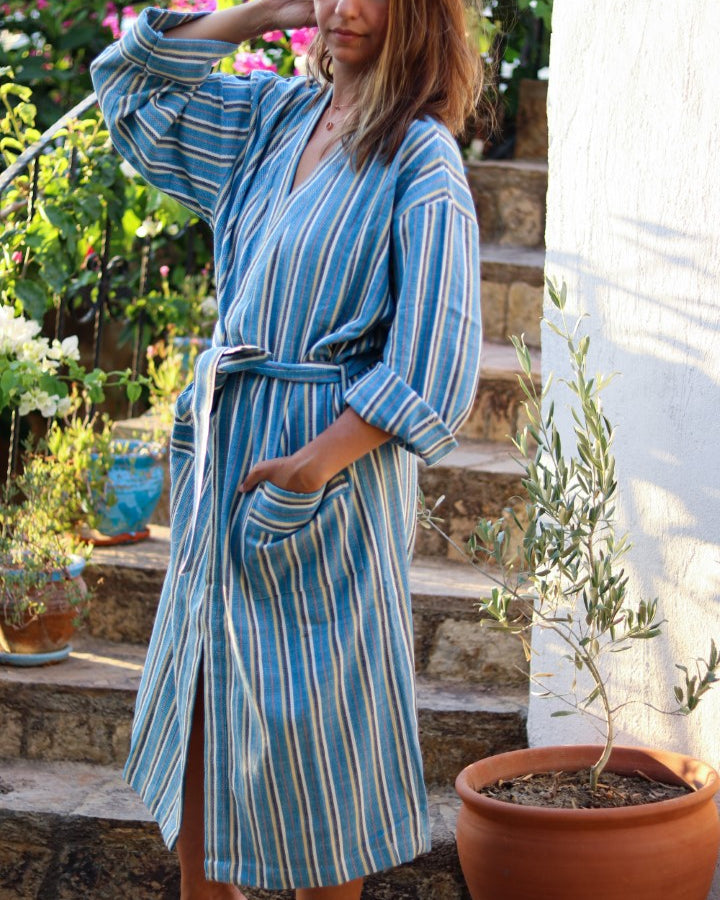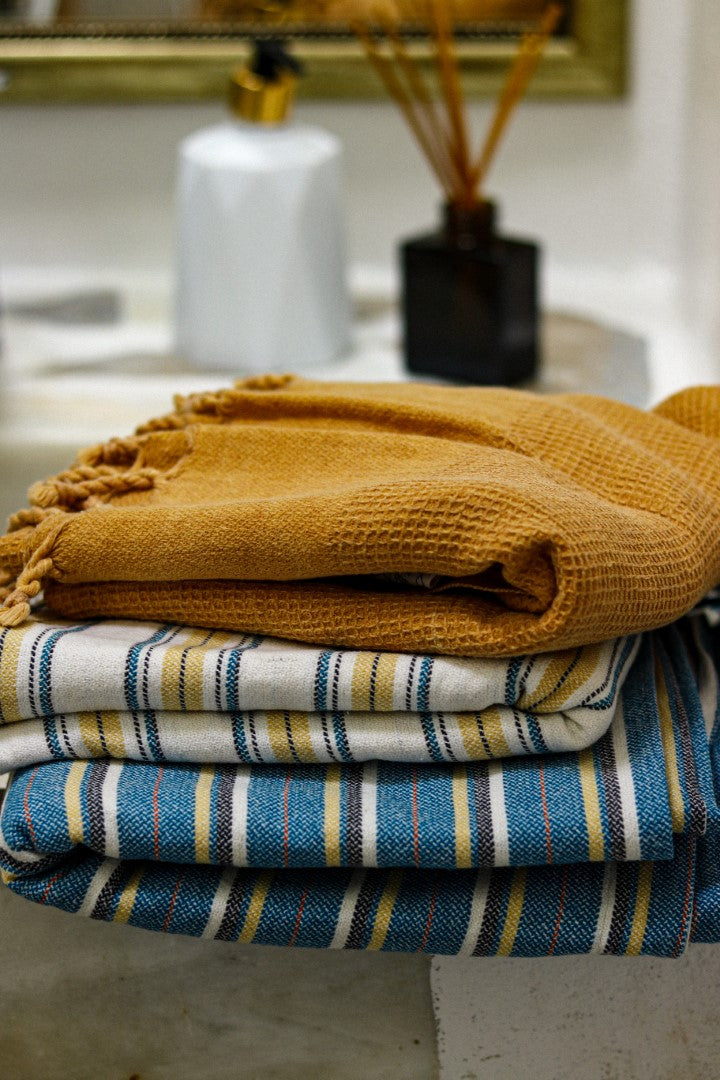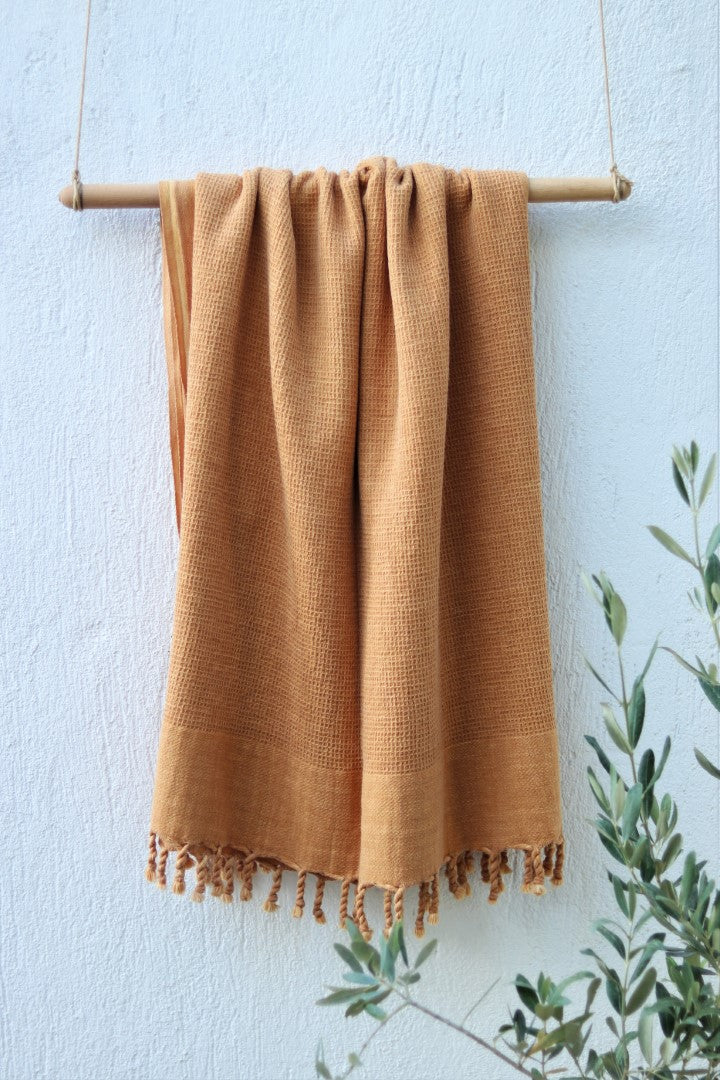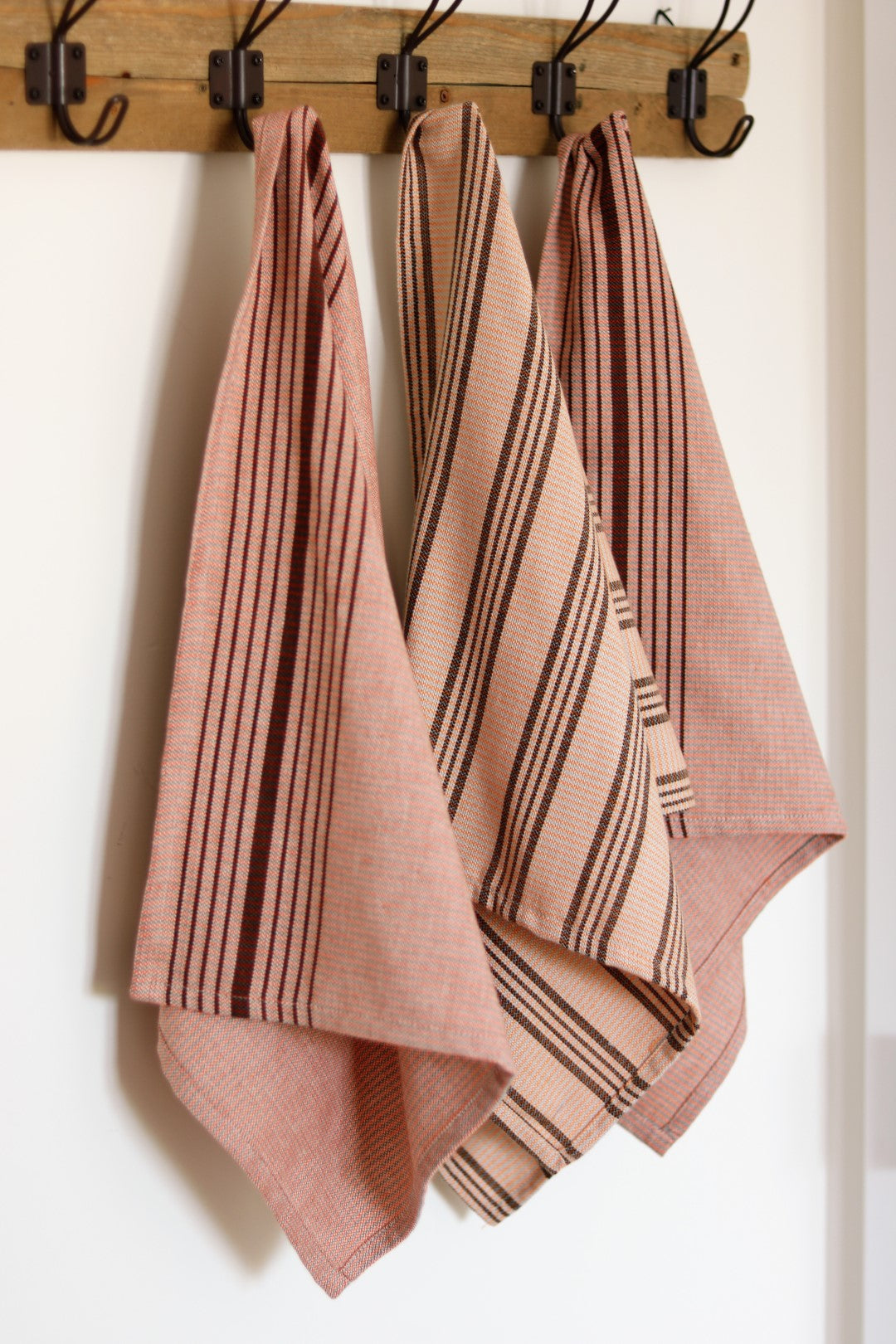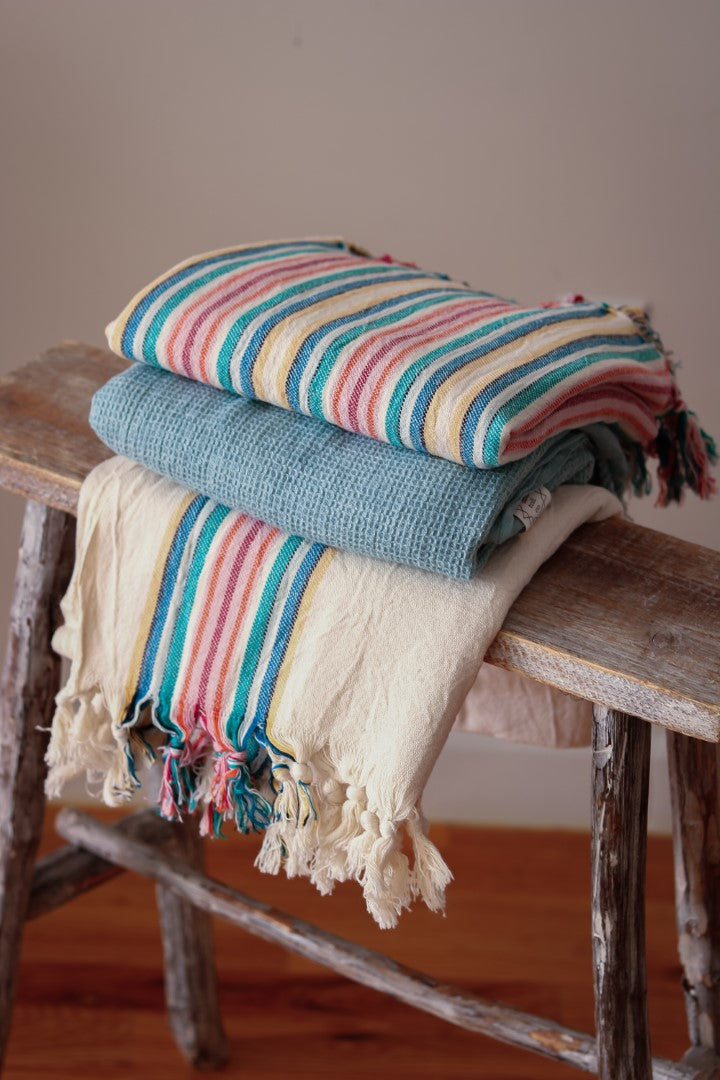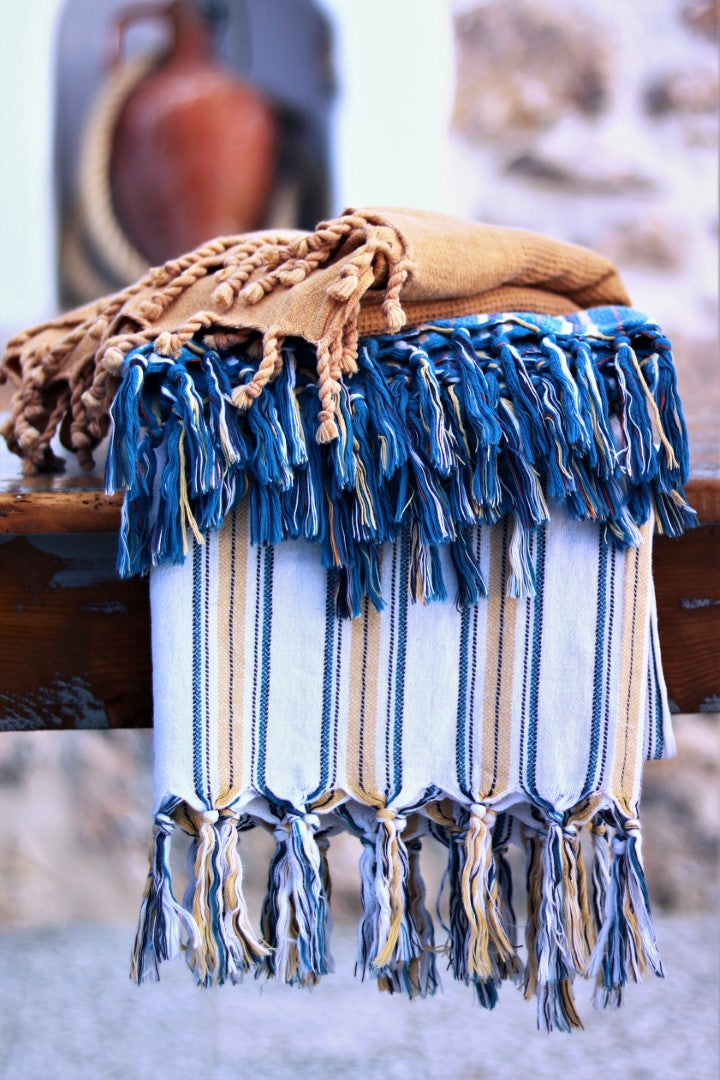When it's blazing hot outside, the right clothes can make all the difference. The best choices are usually lightweight natural fibers, like classic linen and cotton, or some of the newer engineered synthetics, like performance polyester. What these fabrics all have in common is their ability to let air circulate and handle moisture—the two absolute essentials for staying cool when the mercury climbs.
What Actually Makes a Fabric Breathable
Ever wonder why one t-shirt feels like a cool breeze while another traps heat like a plastic bag? It all comes down to "breathability," but that word is a bit more complex than it sounds. True breathability is a team effort between two key properties.
First up is air permeability. This is just a fancy way of saying how easily air can pass through the fabric. Imagine the difference between a chain-link fence and a solid brick wall. A loose, open weave in a fabric is like that fence, letting air move freely to carry heat away from your skin. A dense, tight weave acts like the brick wall, trapping hot air right where you don't want it.
The second piece of the puzzle is moisture management. When you sweat, that moisture has to go somewhere. This is where fabrics play different games. Natural fibers, like cotton, are fantastic absorbers—they soak up sweat like a sponge. On the other hand, many synthetics are built to be moisture-wicking, actively pulling sweat off your skin and pushing it to the fabric's surface so it can evaporate.
For real comfort in the heat, a fabric has to nail both jobs: it must let air in and get moisture out. A material that only does one or the other will leave you feeling sticky and overheated sooner or later.
Understanding the Key Components
To really get a feel for what separates the best fabrics from the rest, it helps to see how these two properties work together. This chart lays out the two pillars of breathability.
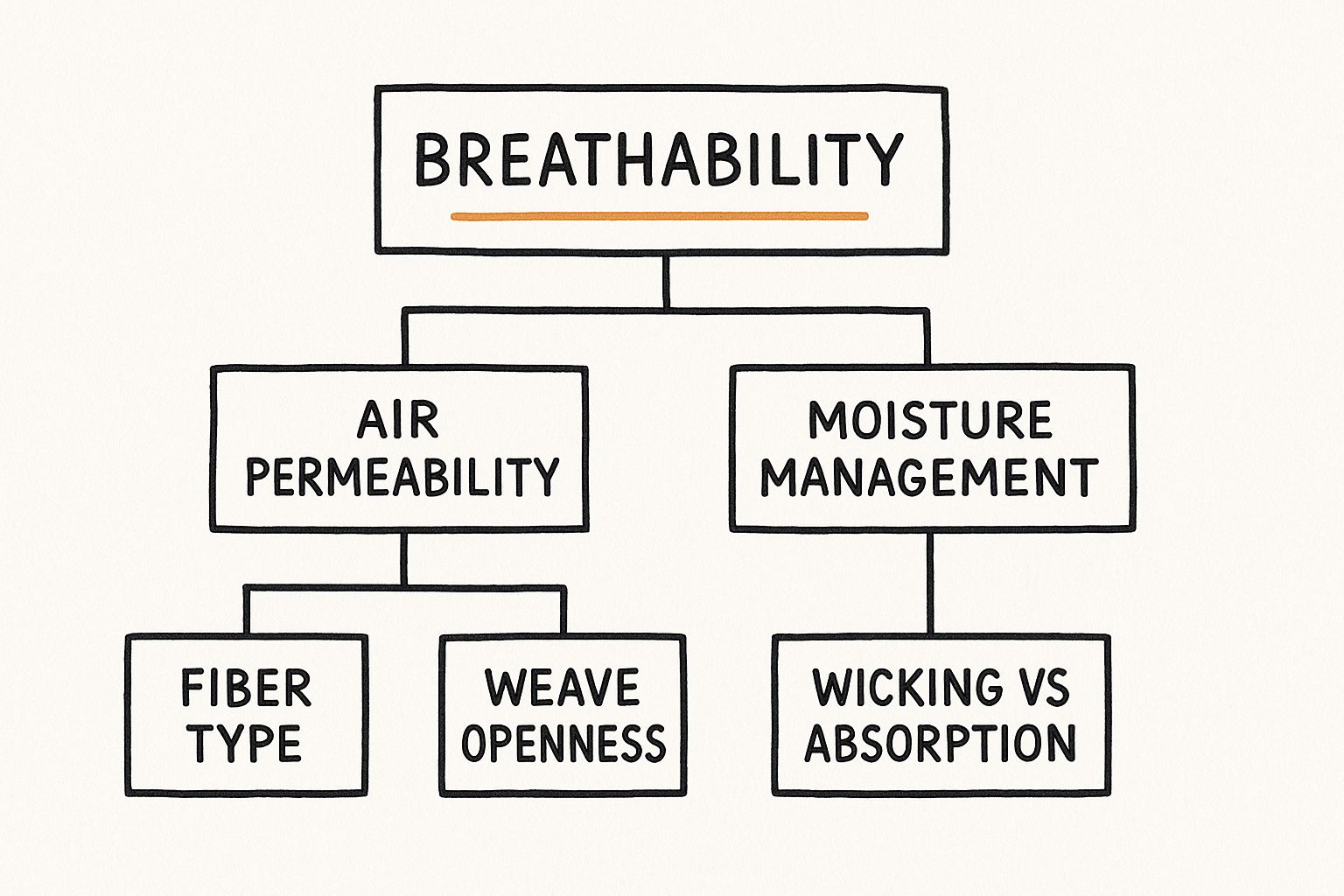
As you can see, both airflow and the way a fabric handles moisture are non-negotiable. With this basic understanding, you can start looking at any piece of clothing and have a pretty good idea of how it will perform in the heat. As we go on, we'll dive into the two main camps—natural fibers and performance synthetics—and see how each one delivers on this cooling combination.
Your Guide to Natural Breathable Fabrics
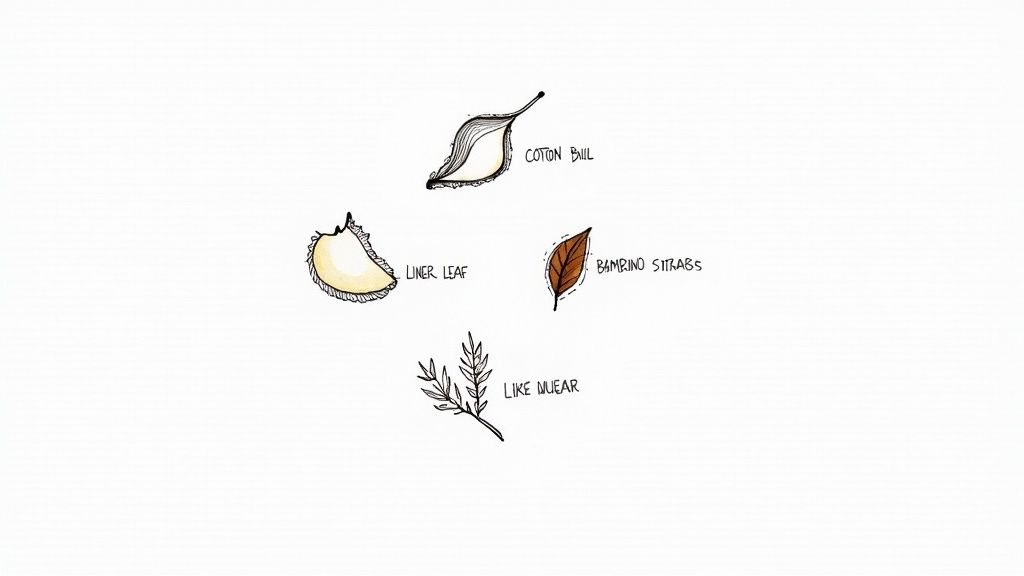
When the temperature skyrockets, reaching for fabrics from the natural world just feels right. These materials have kept people comfortable for centuries, long before synthetic lab creations came along. Their inherent structures are often perfectly designed for letting air flow and managing moisture, making them some of the best breathable fabrics for hot weather.
Unlike synthetics engineered to aggressively wick sweat away, natural fibers usually tackle heat by absorbing moisture while allowing for fantastic airflow. Think of them as nature’s original smart textiles. Let's dive into the most popular and effective options you'll find.
Cotton: The Timeless Classic
Cotton is easily the most recognized and beloved natural fiber on the planet. Its softness and everyday comfort are legendary, cementing its place as a wardrobe staple. When it comes to heat, cotton’s greatest strength is its breathability—the natural space between its fibers lets air circulate with ease.
But cotton has a bit of a complicated relationship with moisture. It’s incredibly absorbent, meaning it can soak up a ton of sweat. In dry heat, this is actually a good thing; as the moisture evaporates, it creates a natural cooling effect.
The problem comes with humidity. Cotton is frustratingly slow to dry, and a sweat-soaked t-shirt can feel heavy, clingy, and end up making you feel even hotter. This is why the type of cotton you choose really matters:
- Pima and Egyptian Cotton: With their extra-long fibers, these premium versions are noticeably softer, stronger, and more breathable than your average cotton.
- Cotton Jersey: This is the soft, stretchy knit fabric of your favorite tees. It's built for casual comfort.
- Chambray: Often mistaken for denim, chambray is much lighter with a plain weave, making it a fantastic choice for breezy summer shirts and dresses.
Linen: The Ultimate Hot-Weather Champion
If we were handing out gold medals for the best natural breathable fabrics for hot weather, linen would be a top contender every time. Made from the flax plant, linen is famous for its exceptional coolness. Its secret lies in its hollow fibers and naturally loose weave, which work together as a built-in ventilation system.
Linen is also a moisture-management powerhouse. It can absorb a huge amount of moisture—up to 20% of its own weight—before it even starts to feel damp. This knack for pulling sweat from the skin and releasing it quickly is what gives linen that crisp, cool-to-the-touch feel on a sweltering day.
The only real knock on linen is its tendency to wrinkle if you just look at it wrong. But for many, those characteristic crinkles are part of its relaxed, effortless charm—perfect for a laid-back summer vibe.
Beyond its performance, linen also has a strong eco-friendly reputation, generally requiring less water and fewer pesticides to produce than cotton. You can get the full story on its environmental credentials here: https://www.anatolico.co/blogs/news/how-eco-friendly-is-linen.
Bamboo: A Silky-Soft Contender
Bamboo fabric is a newer player in the game but has quickly earned a reputation for its luxurious, silky feel and impressive hot-weather performance. It's a type of rayon made from bamboo pulp, and the resulting textile is incredibly soft, lightweight, and drapes beautifully.
Its breathability and moisture-wicking abilities are right up there with the best natural fibers, effectively pulling sweat away to keep you dry. As a bonus, bamboo has natural antimicrobial properties that help cut down on odor-causing bacteria—a huge plus when things get sticky.
Merino Wool: The Surprise Summer Performer
Wool in the summer? I know it sounds completely wrong, but hear me out. Merino wool is a world away from the thick, scratchy stuff of winter sweaters. Its fibers are incredibly fine, soft, and have a remarkable ability to regulate your body temperature.
Here’s the magic: merino wool absorbs moisture vapor from your skin before it even condenses into sweat, releasing it into the air so you never feel clammy. This process keeps you cool when it's hot out and, conversely, warm when it's cold. It’s an amazing choice for active summer days, like hiking, where you might face changing temperatures. And just like bamboo, it's naturally odor-resistant.
Natural Breathable Fabrics at a Glance
Use this quick comparison to choose the right natural fabric for your hot weather needs, rated on key performance metrics.
| Fabric | Breathability Rating | Moisture Management | Best For | Key Drawback |
|---|---|---|---|---|
| Cotton | High | Good (Absorbent) | Everyday casual wear in dry heat | Dries slowly; can feel heavy when wet |
| Linen | Excellent | Excellent (Wicking) | Extreme heat and humidity; beachwear | Wrinkles very easily |
| Bamboo | High | Good (Wicking) | Loungewear; sensitive skin; active days | Can be less durable than cotton or linen |
| Merino Wool | Excellent | Excellent (Regulating) | Hiking, travel, and active pursuits | Higher price point |
Choosing the right fabric goes beyond just staying cool. Understanding the environmental impact of our clothing is more important than ever. For a deeper look into sustainable textiles, check out this fantastic guide to eco-friendly clothing materials.
The push for sustainable options is growing fast. The market for biodegradable fabrics, valued at around USD 1.77 billion, is expected to more than double to USD 3.64 billion by 2030, signaling a major shift in what consumers want from their clothes.
How Synthetic Fabrics Keep You Cool
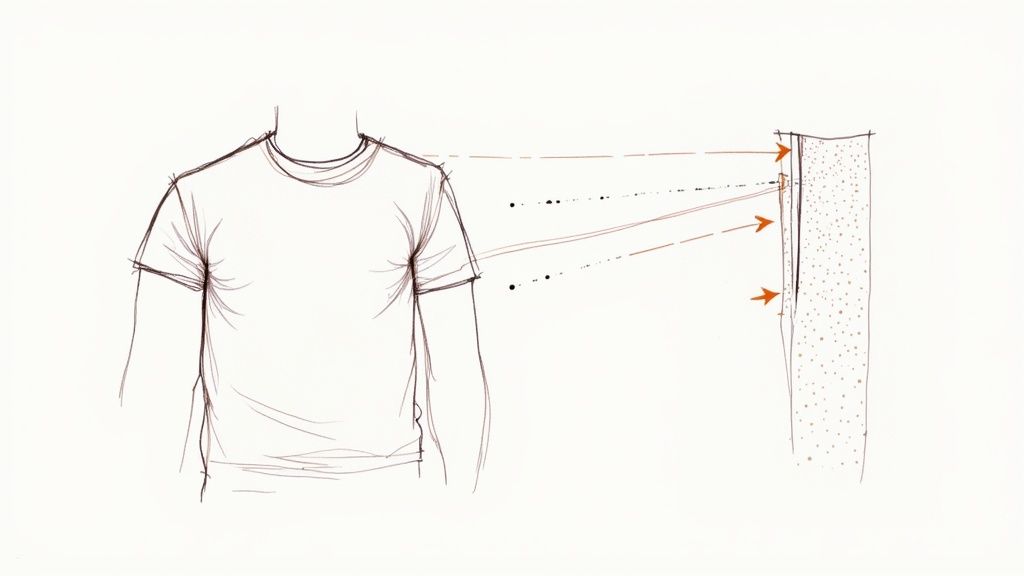
While natural fibers get a lot of love for everyday summer comfort, modern synthetic fabrics are absolute marvels of engineering when you’re on the move. Materials like polyester and nylon, once written off as hot and plastic-like, are now the go-to for high-performance gear built to tackle heat and sweat. The secret isn't about absorbing moisture; it's all about moving it away from you.
This clever process is called moisture-wicking. Picture these synthetic fibers as tiny, super-efficient pipelines. Instead of sopping up sweat like a cotton sponge, they use a physical force called capillary action to pull moisture from your skin to the fabric's outer surface. Once it's out there, the sweat can spread out and evaporate incredibly fast, creating a powerful cooling effect that keeps you feeling dry, even during an intense workout.
The Science of Staying Dry
The real magic is in the structure of the fibers themselves. We're not talking about your grandpa's old polyester suits. Modern textile technology lets us create fibers with specific shapes and micro-grooves that massively increase the surface area for evaporation to happen.
This is exactly why your favorite running shirt feels so different from a casual cotton tee. It’s not built for lounging—it’s built to actively manage your body’s cooling system. This laser focus on performance makes these fabrics the undisputed champs for:
- Intense Workouts: Think running, cycling, or hitting the gym hard.
- Outdoor Adventures: Hiking or playing sports where you know you'll be sweating.
- Humid Climates: Any situation where fast evaporation is the only thing standing between you and that sticky, clammy feeling.
The whole idea is simple but incredibly effective: get sweat off your skin and into the air as quickly as possible. Synthetic wicking fabrics are the best in the business at this, making them one of the best choices for breathable fabrics for hot weather when you’re active.
Polyester: The Workhorse of Activewear
Polyester is pretty much everywhere in activewear, and for good reason. It’s tough, lightweight, and resists wrinkles like a champ. But its real superpower is being hydrophobic—it naturally repels water.
Because polyester fibers absorb almost no moisture (typically less than 1% of their own weight), sweat has no choice but to travel along their surface to the outside of the garment. This is why a polyester shirt can feel almost dry just minutes after you've finished a hard run. Its dominance in sportswear has driven huge growth, with the global market for polyester breathable fabrics on track to hit about $2.5 billion. You can explore more about this market's growth and trends to see just how popular it's become.
Nylon: A Strong and Silky Alternative
Nylon brings many of the same benefits to the table. It’s exceptionally strong, resists abrasion, and has a smooth, silky feel that many people love against their skin. It's a bit more absorbent than polyester, but it still does a fantastic job of wicking moisture away.
You'll often find nylon in gear where you need both durability and stretch, like yoga pants, running tights, and cycling shorts. It's usually blended with spandex (or elastane) to give you that perfect, flexible fit.
The Downsides: A Balanced View
For all their high-tech perks, synthetic fabrics aren't perfect. Knowing their limitations helps you pick the right material for the right moment.
One of the biggest gripes is odor retention. The very same fibers that repel water have an unfortunate tendency to attract oils from your skin. These oils become a buffet for bacteria, which is what causes that funky gym-clothes smell that can be so hard to wash out.
The other major point to consider is the environmental impact. Most synthetics are made from petroleum, a non-renewable resource. On top of that, washing these garments can release microplastics into our waterways, creating a long-term ecological problem that the textile industry is now working to solve. It’s for these reasons that many people stick to natural fibers for casual wear, saving the high-performance synthetics for when they really need them.
Choosing the Right Fabric for Any Occasion
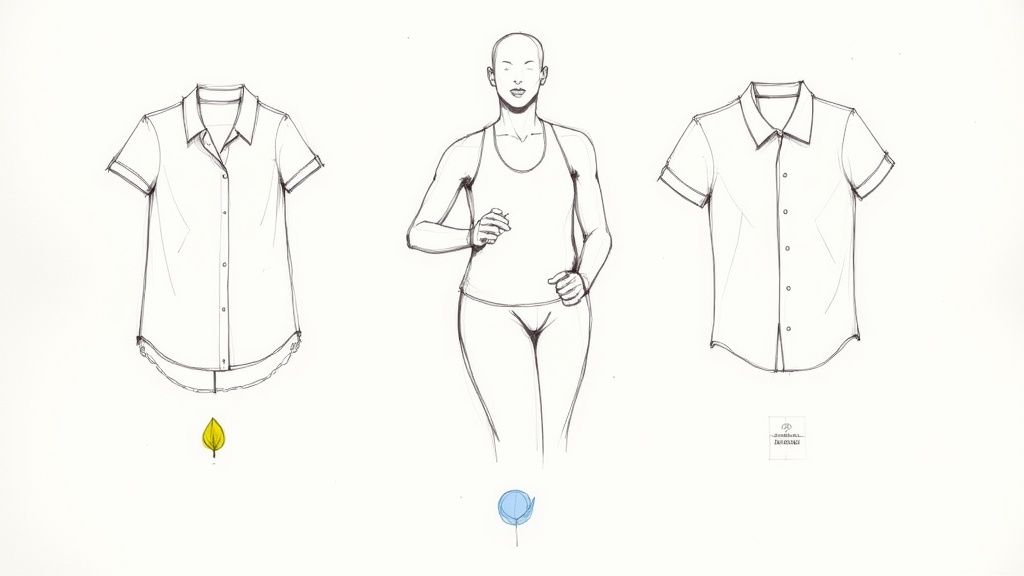
Knowing the science behind different fabrics is one thing, but actually putting that knowledge to work in your closet is a whole different ball game. After all, the perfect fabric for a lazy day at the beach is probably the worst choice for a sweaty gym session.
The real secret to staying cool is matching the material to the mission. Let’s break down how to pick the right breathable fabrics for hot weather based on what you’re actually doing.
A Casual Day Downtown
When you're running errands, grabbing lunch with friends, or just wandering through town, comfort and style are the name of the game. You're not exactly training for a marathon, so you can lean into the classic natural fibers that just feel good.
Linen is the undisputed king here. Its breezy, open weave creates incredible airflow, and it has that effortlessly chic, slightly rumpled look that’s perfect for a sunny day. Think wide-leg linen pants or a simple dress—they're basically personal air-conditioning systems.
Cotton is another fantastic go-to, especially in lighter forms like jersey or chambray. A soft cotton tee or a lightweight button-down gives you that familiar comfort and solid breathability. While it's not great for intense sweating, it can easily handle the demands of a relaxed day. As you shop, you might also think about the bigger picture; it's interesting to see how eco-friendly cotton is depending on how it's grown and processed.
An Intense Gym Session or Outdoor Run
Okay, now it's time to get serious. When you're pushing your limits, your clothing needs to be more than just comfortable—it needs to be functional. High-intensity activities demand high-performance fabrics, and this is where synthetics really shine.
A huge mistake people make is wearing a 100% cotton shirt to work out. The second it gets wet, it turns into a heavy, clingy mess that traps heat against your body. It’s a recipe for an uncomfortable, and shorter, workout.
This is why Performance Polyester and Nylon blends are your best friends at the gym. Their fibers are designed to hate water. Instead of absorbing sweat, they pull it right off your skin and push it to the outside of the fabric where it can evaporate in a flash. This whole process is crucial for keeping you cool and preventing that awful clammy feeling.
A Formal Office Environment
Dressing for the office in the summer is a unique puzzle. You need to look polished and professional, but you also have to survive a stuffy commute or a workplace with finicky climate control. Wrinkled linen is too casual, and workout gear is obviously a no-go.
This is where you bring in the sophisticated fabrics and smart blends:
- Silk and Silk Blends: Silk is a natural wonder. It’s a temperature-regulating fiber that feels incredible on the skin. A lightweight silk blouse or dress is the perfect way to stay cool while looking sharp.
- Tencel (Lyocell): This fabric is a dream for office wear. It has a beautiful, fluid drape like silk, but it’s also fantastic at wicking moisture and resisting wrinkles. You’ll look fresh and put-together from your morning coffee to your commute home.
- Lightweight Merino Wool: Wool in the summer? Absolutely. A finely spun, tropical-weight merino wool is surprisingly breathable and naturally odor-resistant. It’s a premium choice for summer suiting that will keep you comfortable all day long.
The Power of Fabric Blends
Don't sleep on blended fabrics. They are often engineered to give you the best of both worlds, creating a sort of "super fabric" that solves common clothing problems.
For example, a cotton-polyester blend can give you the softness of cotton but with the durability, wrinkle-resistance, and moisture-wicking power of polyester. Likewise, a linen-rayon blend keeps linen’s amazing airflow but adds a softer feel and makes it far less prone to wrinkling. These hybrids are often the most practical and versatile tools for building a smart summer wardrobe.
Why Fabric Weave and Weight Matter
Have you ever held two 100% cotton shirts, where one feels perfect for a scorching summer day and the other feels more like an autumn staple? The difference isn't the cotton itself. It’s all about two details that are easy to miss: weave and weight. Getting a handle on these two things is the last piece of the puzzle for picking truly breathable fabrics.
Think of a fabric’s weave as its blueprint—how the individual threads cross over and under each other to form a solid piece of cloth. This structure is what determines how much air can actually get through, which has a huge impact on how cool you feel.
It’s a bit like the difference between a screen door and a solid wood door. A loose, open weave is your screen door. It has tiny gaps that let air flow right through, carrying heat and sweat away with it. A tight, dense weave, however, acts like that solid door. It creates a barrier, trapping air and making it a terrible choice for a hot afternoon.
Decoding the Weave
How those threads are put together is a huge part of the story. For any real summer comfort, an open structure is non-negotiable.
- Loose Weaves: Think of fabrics like chambray, linen, and voile. If you hold a piece up to the light, you can literally see the daylight between the threads. That's your best clue that it’s built for airflow.
- Tight Weaves: On the other side, you have materials like denim, canvas, or flannel. Their threads are packed together tightly, which makes them tough and warm but also locks in heat right against your skin.
Knowing how textiles are built is fundamental to understanding breathability. You can dive deeper into the specifics of fabric weave to get a better sense of how different constructions work.
Understanding Fabric Weight
Just as important as the weave is the fabric's actual weight, which is often measured in Grams per Square Meter (GSM). You probably won't find this number on most clothing tags, but you don't need to. You can feel it. A lower GSM means a lighter, thinner fabric.
For example, a breezy cotton jersey t-shirt might have a GSM of about 150, making it feel light and almost unnoticeable. A heavy-duty flannel shirt, meant for the cold, could easily be 300 GSM or more. All that extra material doesn't just feel heavier; it traps a whole lot more heat.
The rule of thumb here is simple: lighter fabrics are almost always cooler fabrics. When you're out shopping, just feel the garment. Does it feel light and airy, or does it have some serious heft to it? Your hands will give you a pretty reliable answer about how it’ll perform in the heat.
Once you combine what you know about different fibers with a good eye for weave and a feel for weight, you can look at any piece of clothing and know exactly how it will hold up when temperatures climb. You’ll be able to move past just reading the care tag and start choosing clothes that are truly engineered to keep you comfortable.
Specialty Fabrics for Extreme Heat and Rain
Staying cool in the heat is one thing. But what about when a surprise downpour hits? Most breathable fabrics are fantastic for airflow but will leave you soaked in a storm. This is where a category of highly engineered textiles comes in, designed to solve the paradox of blocking rain while still letting sweat out.
These are known as waterproof breathable fabrics, and they’re the secret sauce in high-performance rain shells, ski jackets, and serious hiking gear. They're built to prevent that awful, clammy feeling you get when your sweat gets trapped inside a regular waterproof layer during physical activity.
The Magic of Microscopic Membranes
So, how do they pull off this trick? The core of the technology is a specialized membrane, often made from materials like expanded polytetrafluoroethylene (ePTFE). Picture this membrane as a microscopic bouncer at an exclusive club.
Its surface is packed with billions of tiny pores per square inch. Each individual pore is too small for a liquid water droplet (like rain) to squeeze through, so it effectively blocks water from the outside. At the same time, those pores are much larger than a single molecule of water vapor (your sweat), giving it a clear exit path.
It creates a perfect one-way street for moisture. Rain can't get in, but sweat vapor can easily get out. This keeps you dry from the weather and dry from your own effort—a total game-changer for anyone who spends time outdoors.
This brilliant piece of engineering is what lets you stay comfortable in a massive range of conditions, from a humid hike with passing showers to a full day of skiing. It’s no surprise that as more people get into outdoor activities, the demand for this technology is skyrocketing.
The market for these fabrics, currently valued at around USD 2.03 billion, is expected to hit USD 2.86 billion by 2030. This growth shows just how vital these textiles have become for anyone needing protection in unpredictable weather. You can learn more about the waterproof fabric market trends and see where the innovation is headed.
When to Choose Specialty Fabrics
Let's be clear: you probably don't need this level of tech for a casual stroll around town. But for certain activities, these fabrics aren't just a luxury—they're essential.
Here’s when you should absolutely consider a waterproof breathable garment:
- Hiking and Backpacking: In the mountains, weather can turn on a dime. A reliable shell is a non-negotiable piece of safety equipment.
- Cycling or Running in the Rain: Staying dry without overheating is the key to both comfort and performance.
- Travel to Unpredictable Climates: A single, packable, high-tech rain jacket can be a traveler’s best friend, ready for anything.
Choosing the right specialty textile means you don't have to let extreme heat or a sudden storm derail your plans. It's an incredible example of how modern fabric science has evolved to keep up with our active lives.
Your Summer Fabric Questions, Answered
Picking the right fabric for a heatwave can feel tricky. You've probably got some questions, and I've got the answers. Let's clear up a few common points so you can shop smarter and stay comfortable.
Is 100% Cotton a No-Brainer for Hot Weather?
Not always. It’s a bit of a myth that 100% cotton is the undisputed king of summer. While it’s fantastically breathable, it’s also a champion sweat-absorber.
The problem? It holds onto that moisture for dear life and dries at a snail's pace. This can leave you feeling damp, sticky, and weighed down, especially on a humid day or if you're moving around a lot. For anything active, you’re much better off with a moisture-wicking synthetic or even merino wool.
How Can I Spot a Breathable Fabric in a Store?
Here's a simple trick I use all the time: hold the fabric up to the light. Can you see a bit of light peeking through the weave? That's a great sign that air can flow through it easily.
Fabrics that feel light and have a more open, loose construction—think linen—are almost always going to beat out heavy, dense textiles like canvas when it comes to breathability.
Beyond just airflow, you want to make sure the fabric is safe and healthy for your skin. It's worth taking a moment to understand what certifications mean, like learning what OEKO-TEX certified means, to ensure your clothes are free from harmful substances.
Choosing high-quality, certified materials is an investment in both your comfort and your well-being.
At Anatolico, we're all about creating that feeling of timeless comfort. Our small-batch Turkish towels, robes, and clothing are crafted from premium, OEKO-TEX certified materials specifically chosen for their incredible breathability and softness. Find the perfect pieces for your warm-weather style and add a little Mediterranean ease to your daily life by shopping our collection at https://www.anatolico.co.

